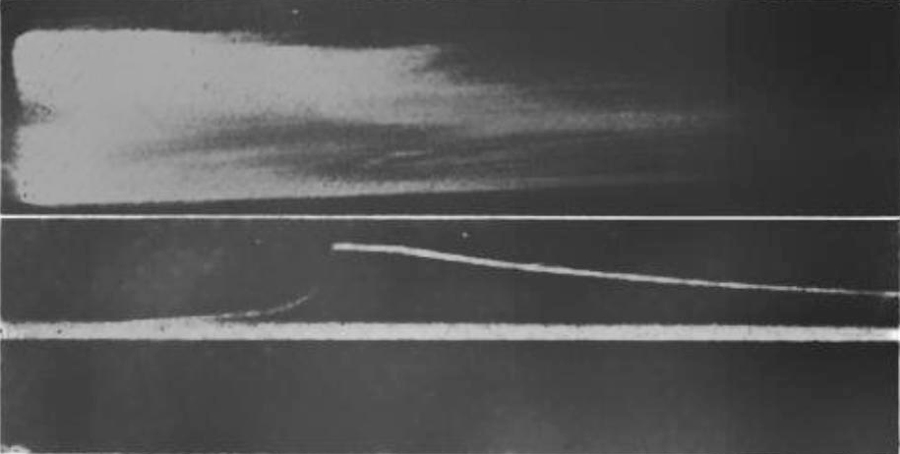and a pressure of 65 lb. absolute

*
Fig. 19 — The flame (upper) and the pressure (lower) record of an explosion of an ether-air mixture at a temperature of 150 Dec. Cent. (302 Deg. Fahr.) and a pressure of 65 lb. absolute.
(cropped from border)
illustrating C. A. Woodbury, H. A. Lewis and C. T. Canby. “The nature of flame movement in a closed cylinder.” Transactions of the Society of Automotive Engineers, Part I, Volume XVI, 1921 (1922) : 465-494, discussion 494-509
University of California, Davis copy, digitized 31 January 2009
“...the flame progressed from ignition at a slowly accelerated rate, until it was arrested a short distance beyond the center of the cylinder. At the time of the arrest autoignition appeared in the unburned gas at a point about equidistant between the advancing flame-front and the top of the bomb. Flame spread from this center of autoignition toward both the top of the bomb and the original flame-front, causing in the latter case a decided recession of the original flame-front. In some cases, after total inflammation had been accomplished, vibrating compression waves were set up in the burned gases...”
p 489
—
“Enclosed space in which all life is locked up. Temperature, pressure — radiation + unknown conditions — hence Duration... Is there anything else?”
Paul Valéry, Cahiers / Notebooks 4 (Stimpson et al, eds., 2010) : 172
tags:
autoignition; compression waves; duration; waves
C. A. Woodbury, H. A. Lewis and C. T. Canby. “The nature of flame movement” (1921); Paul Valéry